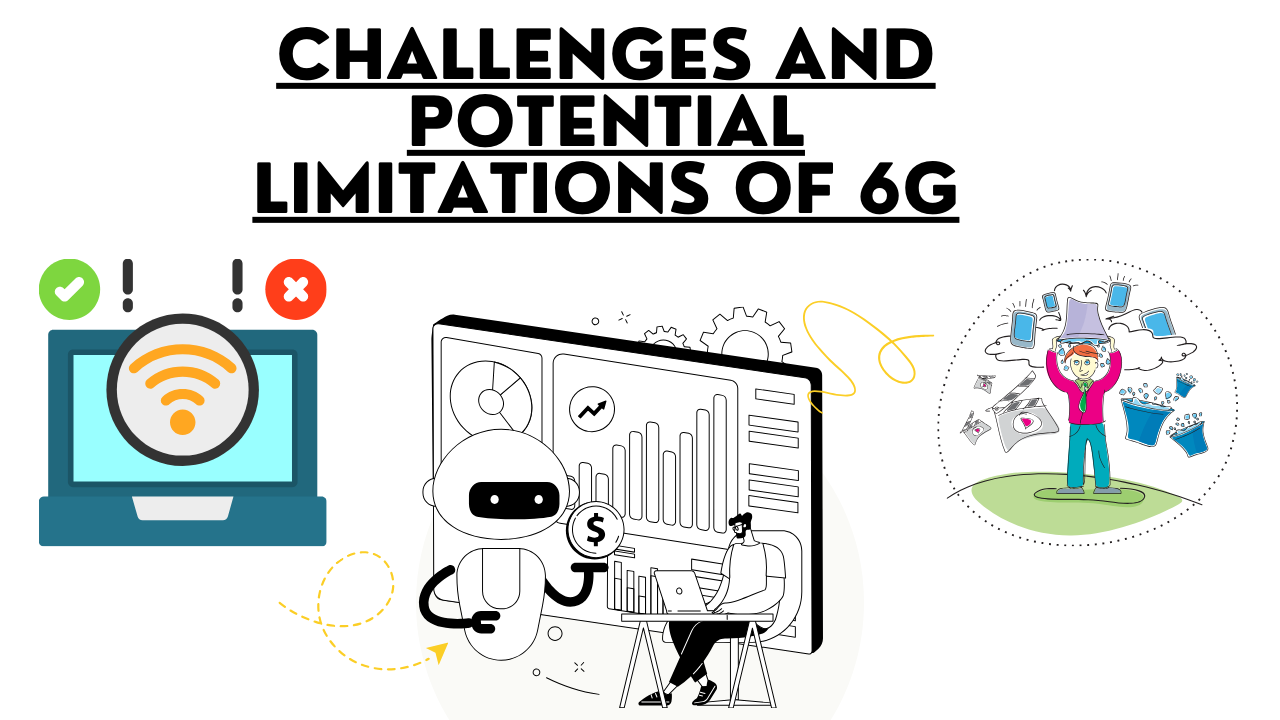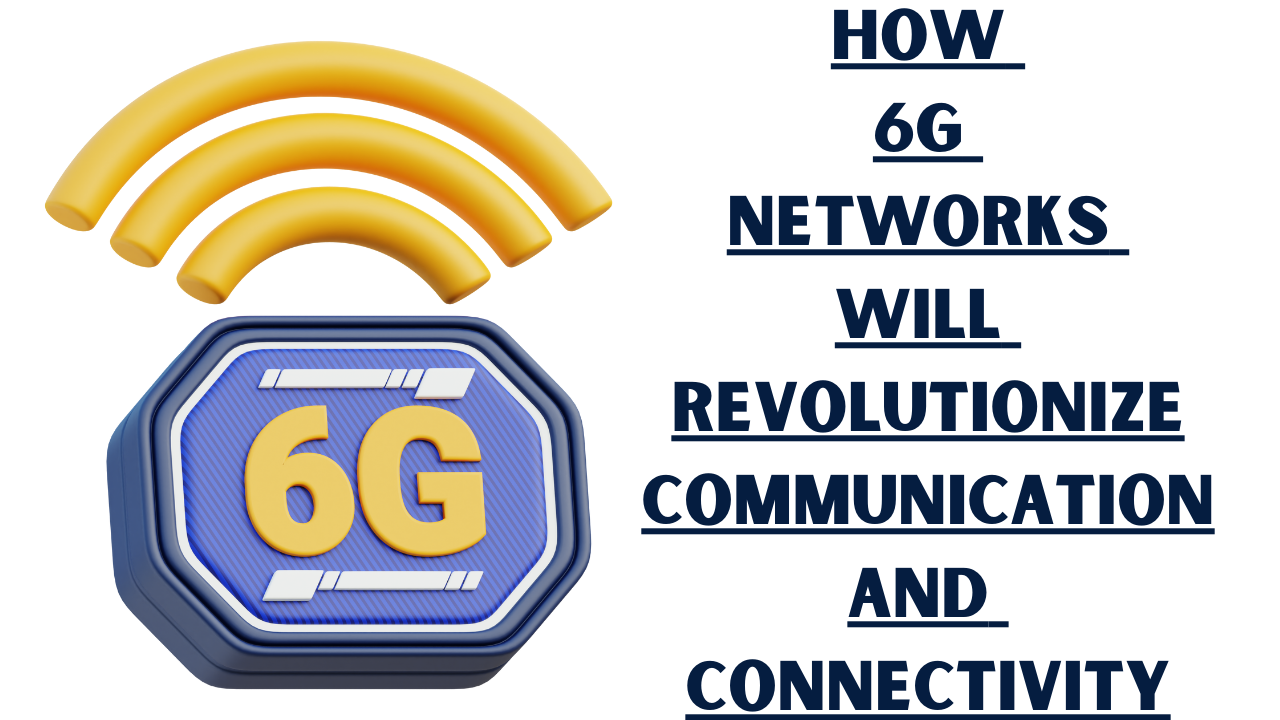As technology progresses at a breakneck pace, the development of 6G networks represents the next major leap in telecommunications. While 5G is still in its deployment stages worldwide, researchers and engineers are already looking ahead to the sixth generation, or 6G networks the ones expected to launch commercially around 2030. By that time, the advancements in technology, data consumption, and connected devices will demand more robust and transformative network capabilities. This article explores what 6G is, its potential benefits, and the ways it will revolutionize communication and connectivity on a global scale.
What Is 6G?
6G stands for the sixth generation of wireless technology, following in the footsteps of 5G, which is currently being rolled out globally. 6G is expected to operate at significantly higher frequencies than its predecessors, reaching up to the terahertz (THz) spectrum, and offering faster speeds, lower latency, and unprecedented data transfer capacities. While 5G offers impressive capabilities for high-speed data transfer and low-latency connections, 6G will likely push these metrics even further, facilitating new applications and technologies that were previously unimaginable.
Speed and Latency: Pushing the Boundaries
One of the most significant improvements that 6G is expected to bring is its speed and ultra-low latency. Early estimates suggest that 6G could provide speeds up to 100 times faster than 5G, reaching theoretical speeds of 1 terabit per second (Tbps). This increase in speed would drastically reduce the time it takes to download large files, stream high-definition content, and transmit data in real-time.
With near-zero latency, 6G could facilitate real-time interactions with virtually no lag. This would be transformative for applications in virtual reality (VR), augmented reality (AR), and other immersive technologies, making them far more responsive and realistic.
Enhancing Connectivity: Connecting More Devices Seamlessly
6G networks aim to handle a vast number of connected devices without compromising performance. While 5G enables millions of devices per square kilometer, 6G could enable tens of millions of connections in the same area, catering to the growing Internet of Things (IoT) landscape. By connecting billions of devices, from wearable technology to smart city infrastructure, 6G will make “smart everything” a reality.
This enhancement will allow for smoother operation of connected devices and pave the way for innovations like smart cities, autonomous vehicles, and connected healthcare systems. From household items to industrial machines, 6G will integrate connectivity into everyday life in ways that 5G could only begin to envision.
The Role of Artificial Intelligence (AI) in 6G Networks
Artificial intelligence is set to be an integral part of 6G technology, with machine learning algorithms playing a crucial role in optimizing network performance, managing traffic, and predicting user needs. AI-driven automation will make 6G networks more efficient, resilient, and adaptable, with the ability to self-heal from issues, dynamically adjust to network traffic, and allocate resources as needed.
The integration of AI into 6G networks will also enhance user experience, allowing for personalized, context-aware services that respond intelligently to individual needs. AI-driven features will also improve security, by detecting and mitigating potential threats in real time.
Applications of 6G in Virtual and Augmented Reality
One of the most exciting areas where 6G will make a difference is in VR and AR. Bandwidth and latency often limit VR and AR experiences, which can cause lag and reduced visual quality. With 6G’s incredible speed and responsiveness, users could experience seamless, high-definition VR and AR environments that respond instantly to their movements.
This advancement could transform industries such as gaming, entertainment, education, and training. For instance, remote learning could incorporate interactive VR and AR environments, allowing students to participate in realistic simulations or virtual field trips to locations they might not otherwise visit.
Transforming Remote Work and Telecommunication
The COVID-19 pandemic has accelerated the shift towards remote work, and 6G could further transform this trend by enabling highly immersive and collaborative work environments. With 6G, remote workers could collaborate in real-time through VR meetings or holographic communication, creating a sense of physical presence despite being miles apart.
Additionally, the ability to transfer vast amounts of data instantaneously and without lag would enable high-definition video conferencing, large-scale file transfers, and smooth online collaboration on data-intensive projects. This shift could revolutionize how teams work and collaborate across the globe.
Autonomous Systems and 6G
Autonomous systems, such as drones, robots, and self-driving vehicles, require robust connectivity and near-zero latency to function safely and effectively. 6G will offer the reliability and speed necessary for real-time communication between autonomous devices, enabling faster reaction times and more precise control.
With 6G networks, we could see a significant boost in autonomous operations, from delivery drones to unmanned medical devices that operate in remote or dangerous locations. The potential applications for autonomous systems will expand across fields such as logistics, transportation, agriculture, and public safety.
Revolutionizing Healthcare with 6G Networks
The healthcare industry stands to benefit immensely from 6G technology. From remote surgeries to real-time patient monitoring, 6G could enable healthcare providers to deliver care more efficiently and safely. One of the most promising applications is the potential for telemedicine and remote diagnostics.
For instance, remote robotic surgeries require ultra-low latency to ensure the surgeon’s movements are mirrored in real-time, with no delay. This precision can only be achieved with the speeds and reliability that 6G is expected to offer, potentially making advanced medical procedures available in remote locations.
Additionally, wearable health devices could be continuously connected to healthcare networks, providing real-time health data that helps physicians make timely and informed decisions. The capacity to transmit this data quickly and securely across 6G networks would bring a new level of innovation to healthcare.
The Role of 6G in Smart Cities
The concept of smart cities involves integrating various aspects of urban infrastructure, from traffic lights to waste management systems, to optimize efficiency and improve residents’ quality of life. With 6G networks, these interconnected systems will become even more powerful, capable of handling and processing enormous amounts of data in real-time.
For example, smart traffic systems could respond instantly to changes in traffic flow, reducing congestion and improving road safety.
Security and Privacy Enhancements in 6G
As 6G networks promise to connect billions of devices and facilitate unprecedented data sharing, robust security and privacy measures are essential. While cybersecurity challenges are present in all networks, 6G will face a unique set of concerns due to its increased capacity and interconnected nature.
Fortunately, 6G is expected to introduce advanced encryption, AI-driven threat detection, and real-time data monitoring to enhance security. This will be crucial in preventing data breaches and ensuring privacy for users across various applications, from healthcare to smart cities. AI-driven security measures will provide faster threat response, potentially preventing cyberattacks before they cause harm.
Sustainability and Environmental Impact
Sustainability has become a significant concern in modern technology development, and 6G is no exception. Researchers and developers are working to make 6G networks more energy-efficient, with low-power consumption and resource-optimized architectures. This focus on sustainability will not only reduce the environmental impact of 6G networks but could also help alleviate some of the concerns associated with increased energy use in technology.
One potential approach is energy harvesting, where networks gather energy from the surrounding environment, such as solar or kinetic energy, to power smaller devices. This development could help make 6G networks a part of a greener technological future.
Expanding Connectivity in Rural and Remote Areas
One of the goals of 6G is to bridge the digital divide and make high-speed internet accessible to more remote areas. While 5G and other wireless technologies have brought internet access to many underserved locations, 6G aims to go further, offering high-speed, low-latency connectivity even in the most rural areas.
With advancements in satellite technology and network architecture, 6G could ensure that individuals in remote areas have access to the same level of connectivity as those in urban centers. This development would allow students, businesses, and communities in these regions to benefit from the opportunities and conveniences offered by high-speed internet access.
Challenges and Potential Limitations of 6G
While 6G holds tremendous promise, it will also face several challenges. For example:
- Infrastructure Costs: Building the necessary infrastructure for 6G networks will be costly and time-intensive, especially for rural areas.
- Energy Consumption: Despite efforts toward sustainability, the vast number of devices connected to 6G networks could increase energy demands.
- Privacy Concerns: As connectivity expands, the amount of data transmitted will grow, raising concerns about data privacy and surveillance.
Addressing these challenges will require cooperation among governments, tech companies, and other stakeholders to create solutions that balance innovation with social and environmental responsibility.
Conclusion
The leap from 5G to 6G promises to be transformative, impacting nearly every facet of life, from personal communication and entertainment to industry and healthcare. With its potential for near-instantaneous data transfer, massive connectivity capabilities, and seamless integration of AI, 6G will pave the way for new technologies and applications that seem like science fiction today.
However, realizing the full potential of 6G will require overcoming technical, financial, and ethical challenges. By the time 6G networks become available to the public around 2030, they could redefine global connectivity standards, enhancing human interactions, expanding economic opportunities, and improving quality of life on a global scale.
FAQs
What is 6G, and how is it different from 5G?
6G is the next generation of wireless technology, expected to provide speeds up to 100 times faster than 5G, with ultra-low latency and extensive device connectivity.
When will 6G be available to the public?
6G is projected to become commercially available around 2030, with ongoing research and development in the meantime.
How will 6G impact healthcare?
6G could enable remote surgeries, real-time patient monitoring, and AI-driven diagnostics, improving healthcare access and quality.
What role will AI play in 6G networks?
AI will help optimize network performance, manage traffic, and enhance security, making 6G networks more adaptive and resilient.
Will 6G be accessible in rural areas?
Yes, one of the goals of 6G is to expand connectivity to underserved and rural areas, reducing the digital divide and enhancing global access to high-speed internet.

